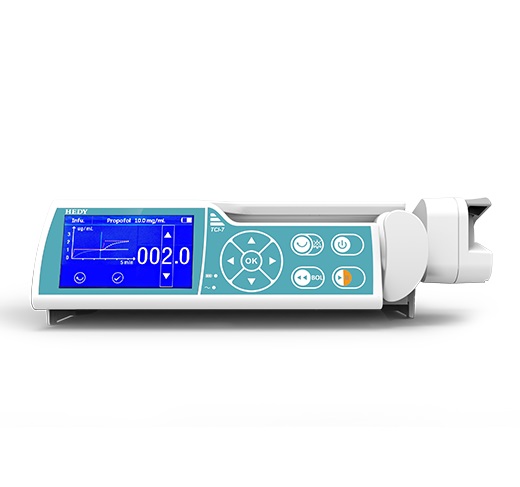
Medical infusion pumps and medical syringe pumps are infusion devices controlled by artificial intelligence. The medical infusion pump can accurately control the flow rate of the infusion, so as to ensure the uniform speed of the liquid medicine and the accurate amount of medicine pumped into the patient's body. Medical syringe pumps are often used in the treatment of infants or patients with cardiovascular diseases because of their more stable and accurate flow rate, and small and accurate drug quantity. At the same time, medical infusion pumps and medical syringe pumps have small appearance, simple operation, and relatively mature technology, so they are widely used in various medical departments, especially some critical medicine departments, such as ICU, CCU, PICU, etc.
System factors are the most fundamental factors that cause the failure of infusion pumps and syringe pumps and affect the safety of infusion pumps and syringe pumps. Therefore, the establishment of related systems should be paid attention to to ensure the safety of infusion pumps and syringe pumps.
As the management department of hospital medical equipment, relevant systems and specifications should be improved, including daily use specifications of infusion pumps and syringe pumps, daily maintenance systems and specifications, quality control and performance testing systems and specifications, and equipment maintenance plans, etc. .
If there are more battery aging faults in the fault, through the implementation of routine maintenance, equipment maintenance and regular inspection related systems, potential risks can be found before the fault occurs, and the occurrence of the fault can be avoided in time.
Among the fundamental factors leading to the failure of infusion pumps and syringe pumps, the human factor is a very important factor. The personnel involved in the use of infusion pumps and syringe pumps in hospitals are mainly divided into two categories: clinical department medical staff responsible for the daily use and maintenance of infusion pumps and syringe pumps, and equipment for regular inspection, maintenance and quality control of infusion pumps and syringe pumps As a responsible engineer, the training of these two types of personnel has been strengthened.
For medical staff in clinical departments, we mainly provide training on the daily use of infusion pumps and syringe pumps, so as to reduce the occurrence of human errors such as misoperation or setting errors. We have hung equipment operation cards and basic error handling instructions on each device; At the same time, it strengthened training in daily maintenance to reduce equipment damage caused by irregular daily maintenance. Equipment information cards were suspended on infusion pumps and syringe pumps, including equipment purchase age, brand, manufacturer contact information, and responsible engineer contact information, etc. So that when the equipment fails, the clinical department user can contact the responsible engineer as soon as possible.
For the responsible engineer, it is necessary to add training on the identification of common fault codes of infusion pumps and syringe pumps, troubleshooting and regular quality control on the basis of daily use and maintenance training. At the same time of training, establish a corresponding training and assessment mechanism, and conduct regular training and assessment of relevant personnel to reduce the impact of the flow of users on the safety of infusion pumps and syringe pumps, and ensure the safety of infusion pumps and syringe pumps.
Studies have shown that regular quality control of infusion pumps and syringe pumps can effectively reduce failures caused by the infusion pump and syringe pump equipment itself. To this end, establish a quality control system for infusion pumps and syringe pumps, formulate quality control plans, and discover potential risks of equipment in advance through regular inspections, preventive maintenance, and performance testing, and minimize the risks.
Copyright:@2020-2021
Comments Please sign in or sign up to post.
0
0 of 500 characters used